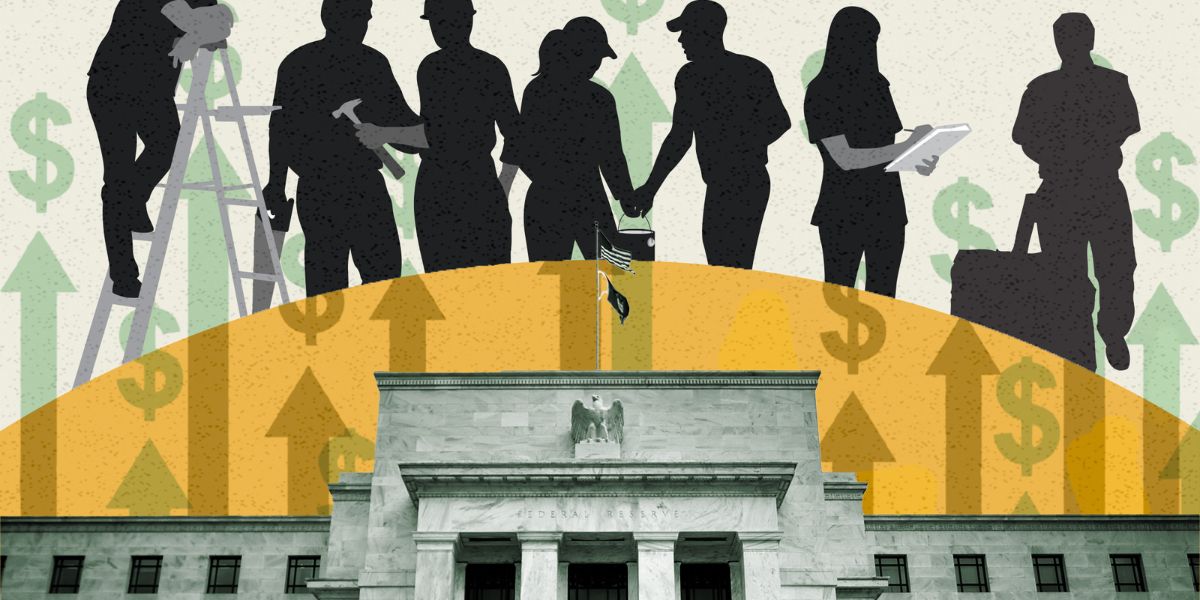Fort Lauderdale, FL – Florida’s economy has been booming, with tourism and new businesses driving growth. However, beneath the surface, a painful reality persists: Florida’s wages have consistently lagged behind other states, leaving the middle class struggling to keep up with rising costs.
According to the most recent Bureau of Labor Statistics data, Florida’s median wage of $38,560 annually trails significantly behind other large states like California ($51,480), New York ($50,940), and Texas ($40,820). This gap has persisted despite Florida’s robust population growth and economic expansion.
Economic Impact Breakdown:
- Average Middle-Class Family Budget (Monthly):
- Rent/Mortgage: $2,274
- Utilities: $350
- Groceries: $450
- Healthcare: $600
- Insurance: $350
- Transportation: $400 Total Essential Expenses: $4,424 vs. Median Monthly Income of $3,950
Why Do Florida Wages Lag Behind
According to the Bureau of Labor Statistics, average weekly wages in Florida’s 25 largest counties were below the national average of $1,173 in the third quarter of 2020. This wage disparity has persisted for decades, particularly in the state’s largest industry: tourism. Several factors contribute to this issue:

- Low-Skill Jobs: A significant portion of Florida’s job market comprises low-skill positions, which typically offer lower wages compared to the national average.
- Tourism-Dependent Economy: The tourism industry, a major economic driver in Florida, often relies on low-wage jobs, further contributing to the state’s wage stagnation.
- Low Unionization Rates: Florida has one of the lowest unionization rates in the country, with only 5.8% of workers belonging to a union, compared to 10.3% nationally. This limits workers’ bargaining power to negotiate higher wages.
- Minimum Wage Policies: While Florida’s minimum wage is gradually increasing to $15 an hour, the impact on overall wage growth remains to be seen.
- Regulatory Environment: Some argue that Florida’s business-friendly regulatory environment, while attractive to businesses, may not always prioritize worker protections and fair wages.
- Tax Policy: Florida’s low tax environment, while attractive to businesses, does not provide sufficient revenue to invest in education and workforce development, which can lead to higher-paying jobs.
Rising Costs of Living in Florida
Florida’s allure as a desirable place to live has led to a population boom, but it has also resulted in soaring living costs. The high demand for housing has driven up prices, making it one of the least affordable states in the nation. Key areas where costs have risen include:
Florida Gulf Coast Struggles With Hurricane’s Impact on Turtle Nesting Sites
- Housing: Median rent prices in Florida increased by over 30% from February 2020 to February 2022. The shortage of affordable housing has left many residents struggling to keep up with rent payments.
- Food and Groceries: Inflation has driven up the cost of food and groceries, further straining household budgets.
- Medical Expenses: The cost of healthcare in Florida has also seen significantly increasedignificant increases, adding to the financial burden on families.
- Insurance: Florida’s insurance costs, particularly for homeowners, have skyrocketed due to factors such as extreme weather events and regulatory changes.
Impact on the Middle Class
The rising costs of living have had a profound impact on Florida’s middle class. Despite being defined as households earning between $53,740 and $161,220 annually, many middle-class families are struggling to make ends meet. A survey by the National True Cost of Living Coalition found that 65% of middle-class Americans, including those in Florida, are struggling financially and do not expect their situation to improve. Key challenges include:
- Increased Debt: Middle-class families are taking on more debt to make ends meet, with the average household debt in Florida exceeding $100,000.
- Reduced Savings: The percentage of Floridians with no retirement savings has increased to 43%, up from 36% in 2019.
- Housing Affordability: With median home prices and rents soaring, many middle-class families find it difficult to secure affordable housing.
- Healthcare Costs: Rising medical expenses are forcing families to cut back on other essential needs.
- Delayed Life Milestones: Many middle-class Floridians are delaying life milestones, such as buying a home or starting a family, due to financial uncertainty.
- Insurance Premiums: Increasing insurance costs, particularly for homeowners, are adding to the financial strain.
Forward Together
The challenges facing Florida’s middle class represent a microcosm of broader national economic trends, highlighting the critical need for comprehensive economic reform and sustainable wage growth.
Florida’s economic growth and population boom have not translated into higher wages for its residents. Instead, the state faces a dual challenge of wage stagnation and rising living costs, squeezing the middle class. Addressing these issues requires a multifaceted approach, including policies to boost wages, increase affordable housing, and manage inflation.
Without such measures, the middle class in Florida will continue to feel the pressure, struggling to maintain their standard of living in the Sunshine State.




